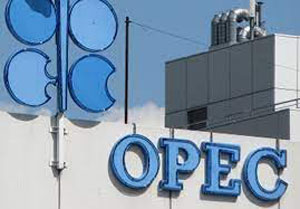 LONDON, Aug 9 (Reuters): Global oil demand growth needs to accelerate in coming months or the market will struggle to absorb an increase in oil supply that OPEC+ is planning to make from October, according to data, analysts and industry sources.
LONDON, Aug 9 (Reuters): Global oil demand growth needs to accelerate in coming months or the market will struggle to absorb an increase in oil supply that OPEC+ is planning to make from October, according to data, analysts and industry sources.
Oil demand growth in the first seven months of the year from top consumers the United States and China had failed to meet some expectations even before renewed fears of a U.S. recession triggered a global stock and bond sell-off this week.
If the economy slows further, oil demand growth will likely slow with it. That will mean OPEC+ would either have to delay plans to pump more oil or accept lower prices for higher supply, analysts said.
"In current circumstances of significant risk of recession, it is unlikely OPEC+ would move forward with the planned October increases," said Gary Ross, CEO of Black Gold Investors and a veteran OPEC-watcher.
The price of oil has fallen below $80 per barrel in August - less than most members of OPEC+, or the Organization of the Petroleum Exporting Countries and allies such as Russia, need to balance their budgets.
"Oil demand definitely has a downside risk," said Neil Atkinson, an independent analyst who previously worked at the International Energy Agency, citing concern about Chinese and U.S. economies.
"It's very difficult to see how prices can rise significantly if demand is slower than we thought" he said, adding that he expected OPEC+ to hit pause on its output increase.
For the first seven months of 2024, China's crude imports totalled 10.89 million barrels per day, down 2.4% on the year, official data showed on Wednesday.
China's slumping consumption of diesel, as use of LNG-powered trucks grows, is weighing on domestic fuel demand, as is a sluggish economy hobbled by a prolonged crisis in the property sector.
In the United States, oil consumption through July has risen by 220,000 bpd on the year to average 20.25 million bpd, according to Reuters calculations based on government estimates. Demand will need to accelerate to reach the government's 2024 forecast of 20.5 million bpd.
Whether or not global demand hits the heights needed to absorb additional supplies this year is difficult to gauge because of a record variation in where the world's most respected oil demand analysts at OPEC and the IEA measure demand to date.
There is a time lag on oil consumption data, and preliminary figures are often revised. That leaves forecasters including best estimates in some of their demand figures.
OPEC pegs global demand growth at 2.15 million bpd in the first half of 2024, while the IEA estimates it was 735,000 bpd. The IEA advises industrialised countries on energy policy.
OPEC's estimate of first-half demand growth is little changed from what it was at the start of the year. The IEA has cut its estimate of first-half demand growth from 1.19 million bpd forecast in January.
The IEA estimated China's consumption contracted in the second quarter, while OPEC estimates it rose by over 800,000 bpd. China is one of the main reasons for the difference in outlooks for the full year, as well as for the first half.
Global growth would need to accelerate a little in the second half if OPEC estimates on first-half demand were correct. But if the IEA is right, demand would need to accelerate rapidly.
The second half is typically the period of highest consumption as the simple fact of global economic growth increases oil demand and because it includes the peak driving season, Northern Hemisphere harvest and purchases to prepare for winter.
For demand growth to hit OPEC's full-year prediction, it would need to accelerate to an average of 2.30 million bpd in the second half, according to Reuters calculations. Demand needs to grow by 1.22 million bpd in the second half to reach the IEA's full-year prediction.
OPEC and the IEA are scheduled to update their demand forecasts next week.
OPEC+ last week confirmed its plan to start raising production from October with the caveat that it could be paused or reversed if needed.
The increase is predicated on demand hitting OPEC's forecast, which would increase the need for oil from the producer group and its allies. OPEC+ pumps more than 40% of the world' s crude.
Should OPEC's demand prediction be realised, the demand for crude from OPEC+ countries is forecast to reach 43.9 million bpd in the fourth quarter, up from production of 40.8 million bpd in June, in theory allowing room for extra output.